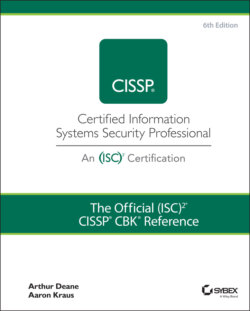Читать книгу The Official (ISC)2 CISSP CBK Reference - Leslie Fife, Aaron Kraus - Страница 28
Integrity
ОглавлениеThe second principle of the CIA Triad is integrity. Integrity is the concept of maintaining the accuracy, validity, and completeness of data and systems. It ensures that data is not manipulated by anyone other than an authorized party with an authorized purpose, and that any unauthorized manipulation is easily identifiable as such. The primary goal of integrity is to ensure that all data remains intact, correct, and reliable. Failure to properly protect data integrity can have a negative impact on business processes, including leading to personnel making improper decisions or potentially harmful actions, due to having incorrect information.
As with confidentiality, integrity may be compromised by malicious acts, human error, oversight, or negligence. Viruses, compromise of poorly written code, and intentional modification are examples of malicious threats that may violate integrity, and we discuss others throughout this book. In addition, integrity violations can occur when an administrator enters the wrong command in a database, when an administrator alters the wrong line in a configuration file, or when a user accidentally introduces malware into their system through a phishing email.
Data backups, software version control, strict access control, and cryptographic hashes are some measures that help ensure data integrity by preventing unauthorized modifications or by allowing tampered data to be restored to a known-good state. Similar to confidentiality, extensive security awareness training is a major factor in preventing nonmalicious integrity violations.
Authenticity and nonrepudiation are two concepts that are closely related to integrity. Authenticity refers to ensuring that data is genuine and that all parties are who they say they are. Nonrepudiation is a legal principle that has a strong parallel in the information security world; this concept requires ensuring that no party is able to deny their actions (e.g., creating, modifying, or deleting data). Digital signatures are the most common mechanisms used to establish authenticity and nonrepudiation in information systems.
